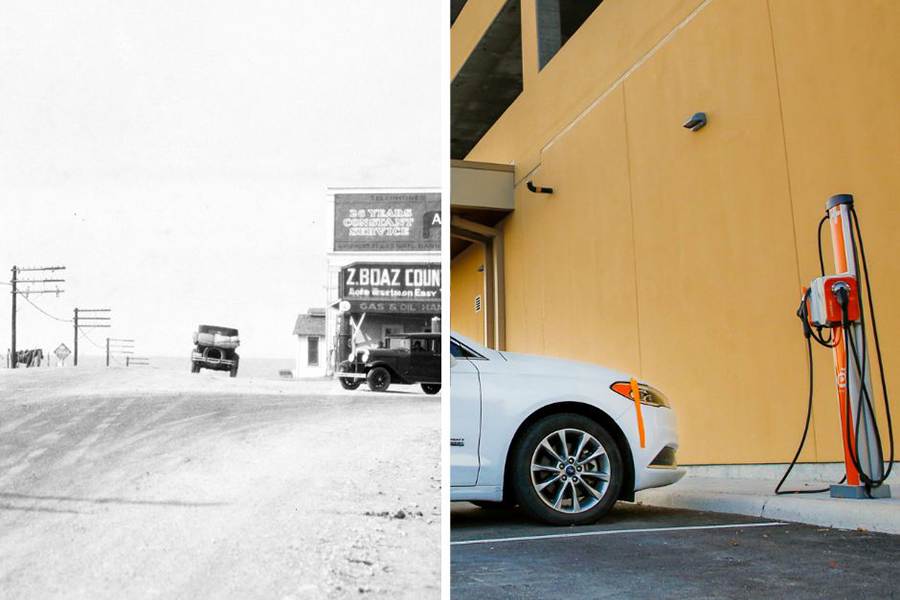
By Adam Hammons
AUSTIN - Electronic vehicles are changing the landscape of the transportation industry, but there are actually a lot of parallels between what’s happening now and the adoption of gas stations more than a century ago.
While electronic vehicle drivers may have shiny lights, massive touch screens and computing technology Neil Armstrong couldn’t even dream of, they’re actually not all that different from cowboys exploring the American frontier.
“It was like the wild west,” TxDOT director of data management Michael Chamberlain said.
Chamberlain has been leading TxDOT’s EV plan, approved by the Texas Transportation Commission in August. He said when EVs first started to come on the market, there were no charging stations, no maps to show you where to charge and people had to figure it out for themselves. That’s very similar to what early gasoline drivers went through.
“And if you look at some of those old pictures, those folks didn’t look like they were going to the corner store. They looked like they were going on a cross country trip. They had 4 or 5 extra tires, they had extra equipment, they were the mechanic, they were the navigator, they were the driver. It was an adventure,” Chamberlain said. “It’s exactly the same thing.”
There were other struggles back then. TxDOT, known as the Texas Highway Department, wasn’t founded until 1917. That’s nearly a decade after the Model T was invented. But the revolution was still the same.
“That was a huge new shift in the way transportation was envisioned and built on the ground,” TxDOT historian Jennifer Carpenter said.
Carpenter and TxDOT’s Beyond the Road program looked into the beginnings of gas stations and how it shaped our country. She said, like EVs, it was a whole new frontier.
“Early gas stations were pretty small, and a lot of times they were just kind of in store fronts downtown, little kiosks or tanks that you would just drive up to and fill your car up with gas,” Carpenter said.
However, as roads were built, gas stations followed. And companies got smart, developing their own brand identities.
“People knew oh that’s a Sinclair station because there’s a dinosaur there, or that’s a Texaco, I see that star,” Carpenter said.
Gas stations turned into convenience stories. A place to relax from the journey and get a bite to eat. Again, just like charging stations.
“You’ll have awnings with solar panels, and you’ll have all this neat stuff that says oh this is the future,” Chamberlain said. “There will be basically charging destinations.”
So what can we learn now that we know charging station origins parallel gas stations? Carpenter said despite questions on how to get this dangerous substance to stations and other issues, the industry not only figured it out, but thrived.
Chamberlain said for him, the biggest lesson is flexibility.
“It may not look the same in 10 years as we think it looks now. We look in hindsight and say oh it’s exactly how it was in 1930. The people in 1930 didn’t know exactly how it was going to roll out,” Chamberlain said.
The Texas Electric Vehicle Infrastructure grant program is open for applications for its first phase of charging stations.
TxDOT historians are also working on other projects throughout the state.